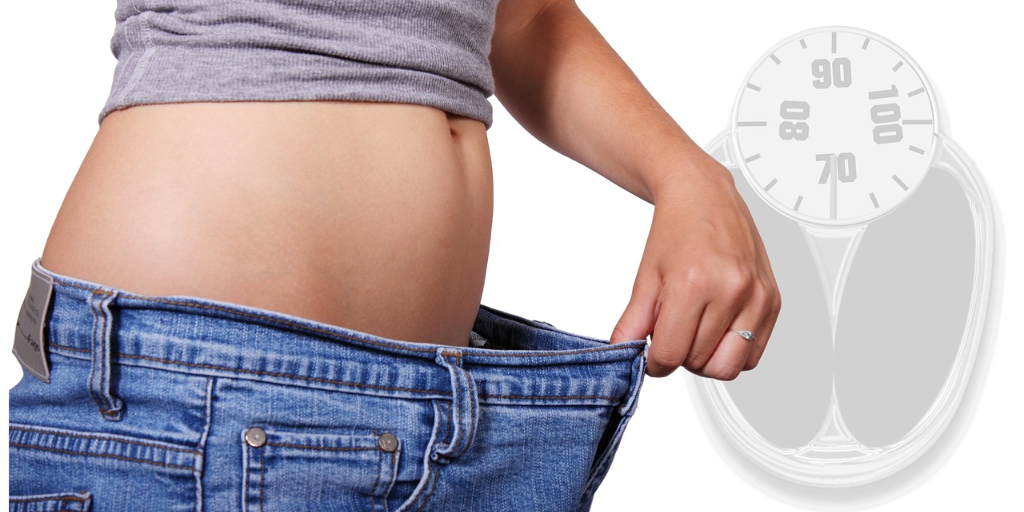Have you ever found yourself reaching for that pint of ice cream after a stressful day? Or maybe diving into a bag of chips when feeling lonely? You’re not alone. Emotional eating is a common experience where food becomes our go-to source of comfort, rather than just fuel for our bodies. In today’s world emotional eating occurs when people use food as a way to cope with or suppress emotions rather than to satisfy physical hunger. This common behavior affects millions of individuals worldwide and can significantly impact both mental and physical well-being.
Understanding the Emotional Eating Cycle
When emotions drive our eating habits, we often find ourselves caught in a complex web of feelings and food. Here’s what typically happens:
- Stress: Work pressure, financial concerns, or relationship issues triggers a craving for comfort foods so many times leads to extra food consumption.
- Anxiety: Feelings of worry or unease about future events leads to mindless snacking and we bang on chips and coke.
- Boredom and Loneliness: Using food to fill time or create stimulation results in habitual eating.
- Sadness and Depression: Using food to temporarily lift mood, draws us toward sugary, high-carb foods.
- Positive Emotions: Celebrations, Achievements, Social gatherings, and reason for Happiness also leads to extra food consumption.
“Food becomes a way to fill emotional voids, rather than physical hunger.”
Signs You Might Be an Emotional Eater
- Eating in response to feelings rather than hunger
- Craving specific comfort foods when upset
- Continuing to eat even when full
- Always available to food
- Feeling guilty after eating
- Using food as a reward system
Physical vs. Emotional Hunger
Physical hunger develops gradually and can be satisfied with any food, while emotional hunger comes on suddenly and often leads to specific cravings.
Physical Hunger Characteristics
- Develops gradually
- Open to various food options
- Stops when full
- No feelings of guilt
Emotional Hunger Characteristics
- Comes on suddenly
- Craves specific comfort foods
- Often leads to mindless eating
- Accompanied by guilt or shame
Breaking the Cycle
Healthy Coping Strategies:
1. Practice Mindful Eating:
- Quality, Quantity, and Timing: Be conscious of the nutritional value, portion sizes, and timing of your meals.
- Eat Without Distractions: Avoid distractions like TV or smartphones while eating.
- Chew Slowly and Deliberately: Take your time to chew each bite thoroughly.
- Pay Attention to Hunger and Fullness Cues: Listen to your body’s signals to know when you’re hungry or full.
- Use Smaller Plates: This can help control portion sizes and prevent overeating.
2. Keep a Food-Mood Diary
- Document Your Eating Habits: Write down what you eat, when you eat, and how you feel before and after.
- Track Hunger Levels: Rate your hunger on a scale of 1-10 before each meal or snack.
- Identify Patterns: Look for trends in your eating habits and emotional triggers.
3. Create a Supportive Environment
- Pre-Plan Meals: Plan your meals ahead of time to ensure healthy choices.
- Remove Trigger Foods: Clear your home of foods that tempt you to overeat.
- Stock Up on Healthy Alternatives: Keep nutritious snacks and ingredients on hand.
- Establish Regular Eating Schedules: Stick to a consistent meal schedule to maintain balanced blood sugar levels.
4. Engage in Physical Activity
- Workouts and Happy Hormones: Regular exercise releases endorphins, which can improve mood and reduce emotional imbalance.
- Reduce Cravings: Physical activity can help decrease cravings for comfort foods over time.
5. Avoid Digital Interruptions
- Gadget-Free Meals: Keep electronic devices away from the dining table.
- Focus on Your Meal: Concentrate on portion sizes and the food you’re eating.
- Digestive Benefits: Reducing digital distractions can help improve digestion by allowing your body to focus on the eating process.
6. Seek Support from Friends or Professionals
- Emotional and Mental Support: Reach out to family and friends for support during times of emotional distress.
- Consult Experts: Consider seeking guidance from dietitians, wellness coaches, or joining support groups and communities.
7. Learn Stress Management Techniques
- Meditation: Practice mindfulness and meditation to manage stress.
- Gratitude Journal: Keep a journal to record things you’re grateful for.
- Yogic Practices: Incorporate practices like Pranayama (breathing exercises) to reduce stress.
8. Practice Self-Love
- Emotional and Mental Well-Being: Cultivate self-love to maintain a positive emotional and mental state.
- Better Eating Habits: Self-awareness can lead to healthier eating habits and lifestyle choices.
9. Implement Healthy Lifestyle Changes
-
- Regular Sleep Patterns: Ensure you get enough quality sleep each night.
- Stay Hydrated: Drink plenty of water throughout the day.
- Stress-Free Living: Focus on reducing stress through healthy habits and activities.
The Neurological Connection
When we experience emotional eating, our brains activate specific neural pathways that connect our emotions to our eating behaviors. The primary regions involved include:
- The amygdala – processes emotions
- The hippocampus – stores memories
- The hypothalamus – regulates hunger and satiety
Stress Hormones and Appetite
During emotional situations, our bodies release stress hormones:
- Cortisol (Stress Hormone) increases appetite and cravings for high-calorie foods
- Ghrelin (Hunger Hormone) levels rise, stimulating hunger
- Leptin (Satiety Hormone) levels drop, leading to cravings
- Serotonin (Happy Hormone) levels drop, leading to cravings for carbohydrate-rich foods
The Reward System
“Comfort foods trigger the brain’s reward system, releasing dopamine and creating a temporary sense of pleasure and relief.”
The consumption of palatable foods during emotional states activates the brain’s reward circuitry through:
- Dopamine release
- Endorphin production
- Reduced stress hormone levels
Psychological Mechanisms
Emotional eating often involves:
- Classical conditioning – This occurs when individuals begin to associate food with emotional comfort. For example, if you were regularly given a treat to soothe you as a child when you were upset, you might start to associate sweet foods with feeling better. Over time, this association can become a trigger—every time you feel stressed or sad, you might crave the comfort of the foods you were given.
- Learned behavior – This aspect involves mimicking the coping mechanisms observed in others during childhood, often from parents or caregivers. For instance, if you saw a parent reach for a tub of ice cream after a hard day, you might learn to adopt the same strategy for dealing with your own stressors. These behaviors become ingrained and can be carried into adulthood.
- Habit formation – When stress eating is frequently used as a response to negative emotions, it can form a habitual pattern. Our brains love routines because they conserve mental energy. Each time you reach for food in response to stress, it strengthens the neural pathways related to this behavior, making it more likely that you’ll use the same coping mechanism again in the future. Over time, it becomes an automatic response.
Biological Factors
Several physiological components influence emotional eating:
- Blood sugar fluctuations: When your blood sugar levels drop, you may experience feelings of irritability, fatigue, and hunger. These symptoms can lead to cravings for sugary or high-carb foods to quickly boost blood sugar levels. Unfortunately, this can create a cycle of spikes and crashes, perpetuating the urge to eat emotionally.
- Hormonal imbalances: Hormones play a significant role in regulating hunger and mood. For example, cortisol (a stress hormone) can increase appetite and drive cravings for high-fat and high-sugar foods. Similarly, imbalances in hormones like insulin, ghrelin, and leptin can disrupt normal hunger signals and lead to overeating.
- Neurotransmitter levels: Neurotransmitters such as serotonin and dopamine are crucial in regulating mood and reward. When these chemicals are out of balance, it can result in mood swings and a heightened desire for comfort foods. For instance, eating carbohydrates can increase serotonin levels, leading to a temporary feeling of well-being, which might be sought during emotional distress.
- Gut-brain axis communication: The gut-brain axis refers to the bidirectional communication between the gastrointestinal tract and the brain. The gut is sometimes called the “second brain” because it produces many of the same neurotransmitters found in the brain. An imbalance in gut microbiota can impact mental health, leading to anxiety or depression, which can in turn trigger emotional eating. Conversely, emotional distress can alter gut function, creating a feedback loop that perpetuates the behavior.
Impact on Digestive System
Stress-induced eating affects digestion through:
- Altered gut motility: Stress can significantly impact how your digestive system moves food through your gut. It can either speed up or slow down gut motility. Rapid motility can lead to diarrhea, while slowed motility can cause constipation. Both conditions are disruptive and can lead to discomfort and further digestive issues.
- Changed nutrient absorption: When under stress, the body’s ability to absorb nutrients efficiently can be compromised. This means that even if you’re eating nutritious foods, your body might not be getting the full benefit of them. Chronic stress can lead to deficiencies in essential vitamins and minerals, further impacting overall health.
- Modified gut microbiome composition: The gut microbiome is a complex community of microorganisms living in the digestive tract, crucial for digestion and overall health. Stress can alter the balance of these microorganisms, leading to a less diverse microbiome. This imbalance can contribute to various digestive issues, such as irritable bowel syndrome (IBS), and may affect mood and mental health due to the gut-brain axis.
- Increased inflammation: Chronic stress can lead to inflammation in the gastrointestinal tract. This inflammation can cause a variety of digestive problems, such as bloating, pain, and more serious conditions like inflammatory bowel disease (IBD). Inflammation can also make the gut lining more permeable, a condition known as “leaky gut,” which allows toxins and undigested food particles to enter the bloodstream, potentially leading to systemic inflammation and other health issues.
Emotional eating is a complex interplay of psychological, biological, and environmental factors. It often stems from a deep-seated association between food and emotional comfort, developed through classical conditioning, learned behaviors, and habitual patterns. However, recognizing the triggers and understanding the underlying causes can pave the way for healthier coping mechanisms.It’s essential to approach this journey with patience and self-compassion, as sustainable change often takes time and effort. With the right strategies and support, you can develop a healthier relationship with food and emotions, leading to improved overall well-being. If you have any further questions or need additional guidance, feel free to reach out!
Thank you,
Sculpting Lifestyle
Disclaimer: This article is purely for information purpose; it is not a substitute for any medical treatment and therapy. Consult healthcare provider or dietician for proper guidance.
Book Your Personal Consultation Today!! Click Here



